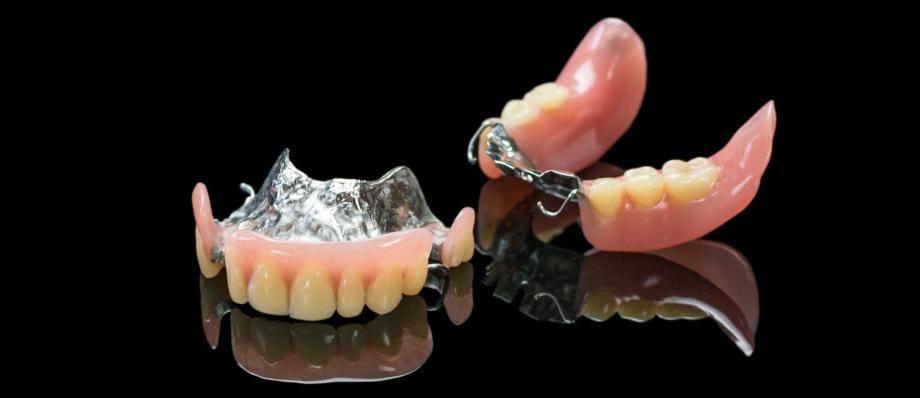A removable partial denture (RPD) is a dental prosthesis that is designed to replace one or more missing teeth. It is a cost-effective alternative to fixed dental bridges or dental implants. RPDs are custom-made dental appliances that are fabricated in a dental laboratory using impressions and models of the patient’s mouth. They are composed of a metal or acrylic framework that supports artificial teeth and is held in place by clasps or attachments.
RPDs are an effective way to restore the function and aesthetics of a patient’s mouth, especially when they have missing teeth. In this article, we will discuss the indications, contraindications, types, advantages, disadvantages, and maintenance of RPDs.
Table of Contents
ToggleIndications for Removable Partial Dentures
The following are the indications for RPDs:
- Replacing one or more missing teeth.
- Preserving the remaining natural teeth.
- Restoring the function of the mouth, such as chewing and speaking.
- Restoring the aesthetics of the mouth, such as the appearance of the smile.
- Preventing the movement of the remaining teeth.
Contraindications for Removable Partial Dentures
The following are the contraindications for RPDs:
- Poor oral hygiene.
- Active periodontal disease.
- Uncontrolled caries.
- Uncontrolled systemic disease, such as uncontrolled diabetes.
- Insufficient supporting tissues, such as bone and gums.
- Psychological factors, such as fear or anxiety.
Types of Removable Partial Dentures
RPDs can be classified into the following types:
- Acrylic partial dentures
- Metal partial dentures
- Flexible partial dentures
- Cast partial dentures
Acrylic partial dentures
They are composed of an acrylic resin base and artificial teeth. They are held in place by clasps that wrap around the natural teeth.
Metal partial dentures
They are composed of a metal framework and artificial teeth. They are held in place by clasps or attachments that are fixed to the natural teeth.
Flexible partial dentures
They are composed of a flexible material, such as nylon. They are held in place by clasps or attachments that are fixed to the natural teeth.
Cast partial dentures
They are composed of a metal framework that is casted and fitted to the patient’s mouth. They are held in place by clasps or attachments that are fixed to the natural teeth.
Advantages of Removable Partial Dentures
The following are the advantages of RPDs:
- Cost-effective
- Aesthetics
- Function
- Preservation of natural teeth
- Easy to maintain
Cost-effective
RPDs are a cost-effective alternative to fixed dental bridges or dental implants.
Aesthetics
RPDs can restore the aesthetics of the patient’s mouth, such as the appearance of the smile.
Function
RPDs can restore the function of the patient’s mouth, such as chewing and speaking.
Preservation of natural teeth
RPDs can preserve the remaining natural teeth by preventing their movement.
Easy to maintain
RPDs are easy to maintain and can be easily adjusted if needed.
Disadvantages of Removable Partial Dentures
The following are the disadvantages of RPDs:
- Initial discomfort
- Difficulty in speaking
- Acrylic denture bases
- Aesthetic limitations
- Maintenance
Initial discomfort
RPDs can cause initial discomfort, such as soreness or irritation of the gums.
Difficulty in speaking
RPDs can cause difficulty in speaking, especially in the initial stages.
Acrylic denture bases
Acrylic denture bases can cause allergies or irritations in some patients.
Aesthetic limitations
RPDs have aesthetic limitations and may not look as natural as fixed dental bridges or dental implants.
Maintenance
RPDs require regular maintenance, such as cleaning and adjustment.
Maintenance of RPD
The following are the maintenance tips for RPDs:
- Brush the RPD daily
- Soak the RPD overnight
- Avoid hot water
- Avoid abrasive cleaning materials
- Visit the dentist regularly
Brush the RPD daily
RPDs should be brushed daily with a soft-bristled brush and non-abrasive toothpaste. This helps to remove plaque, bacteria, and food particles from the appliance.
Soak the RPD overnight
Like dentures, RPDs should be soaked in a denture cleaning solution overnight to remove any bacteria or stains.
Avoid hot water
RPDs should not be exposed to hot water, as it can cause the appliance to warp or deform.
Avoid abrasive cleaning materials
RPDs should not be cleaned with abrasive materials, such as bleach or vinegar, as they can damage the appliance.
Visit the dentist regularly
Patients should visit their dentist regularly for check-ups and adjustments to ensure that the RPD is fitting properly and functioning correctly.
Cost of Removable Partial Denture
The cost of a Removable Partial Denture (RPD) can vary depending on several factors, such as the complexity of the case, the materials used, the location of the dental practice, and the dentist’s experience. In general, RPDs can range from a few hundred dollars to several thousand dollars per arch.
It is important to note that RPDs are typically more affordable than other tooth replacement options, such as dental implants or fixed dental bridges. However, the cost of RPDs may be covered partially or entirely by dental insurance, depending on the individual’s insurance plan.
Patients should discuss the cost of RPDs with their dentist and check with their insurance provider to determine their coverage and out-of-pocket costs. Some dental practices may also offer payment plans or financing options to help make the cost of RPDs more manageable.
Conclusion
Removable partial dentures are a cost-effective and practical solution for patients with missing teeth. They are easy to maintain and can restore the function and aesthetics of the mouth. However, they also have some disadvantages, such as initial discomfort, difficulty in speaking, and aesthetic limitations. It is important for patients to follow proper maintenance tips and to visit their dentist regularly for check-ups and adjustments. With proper care, RPDs can provide a comfortable and effective solution for patients with missing teeth.

